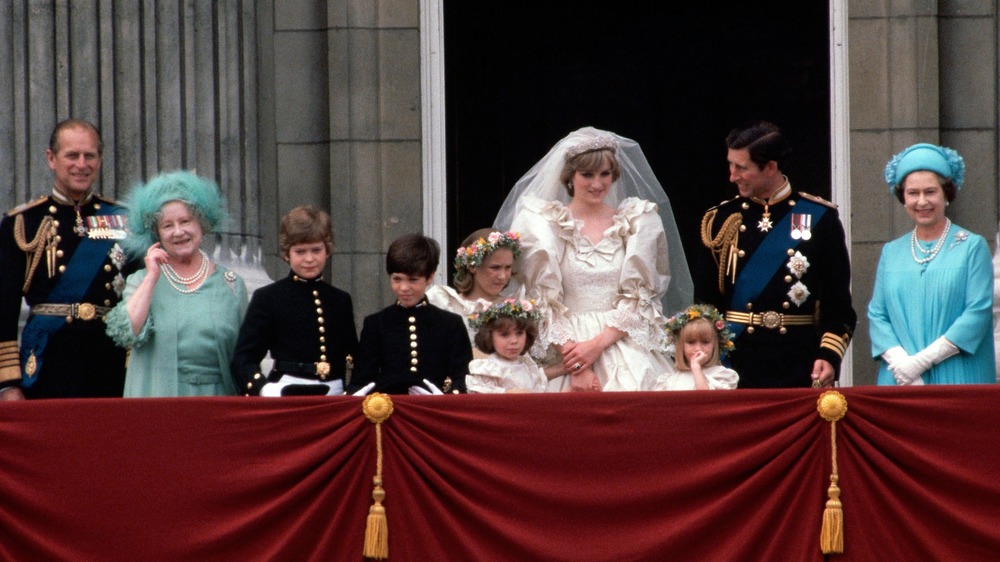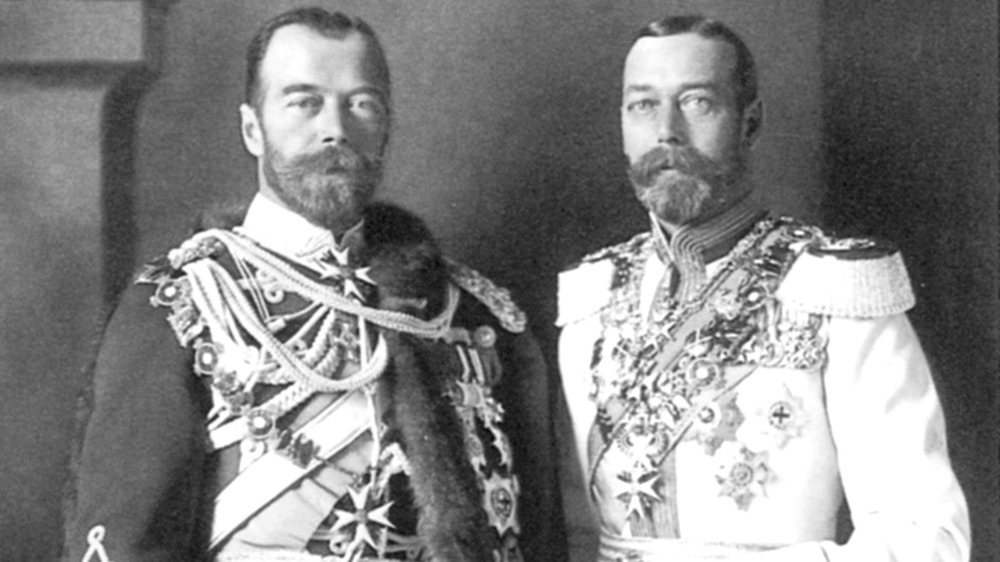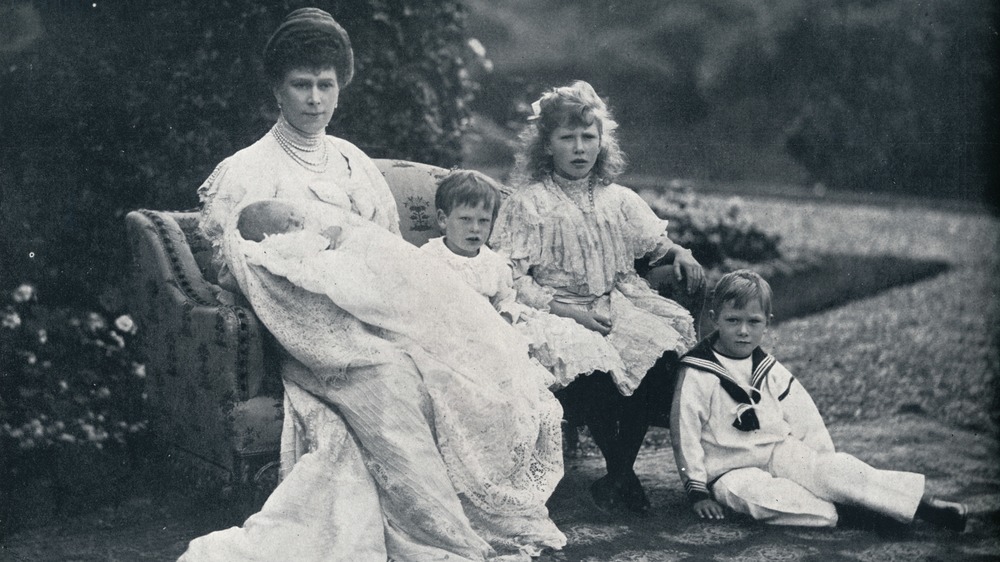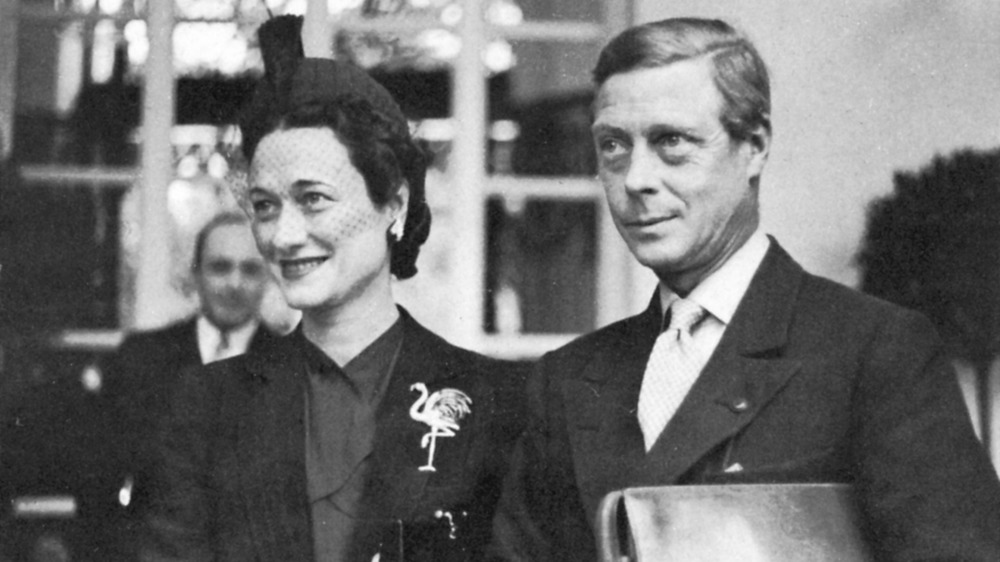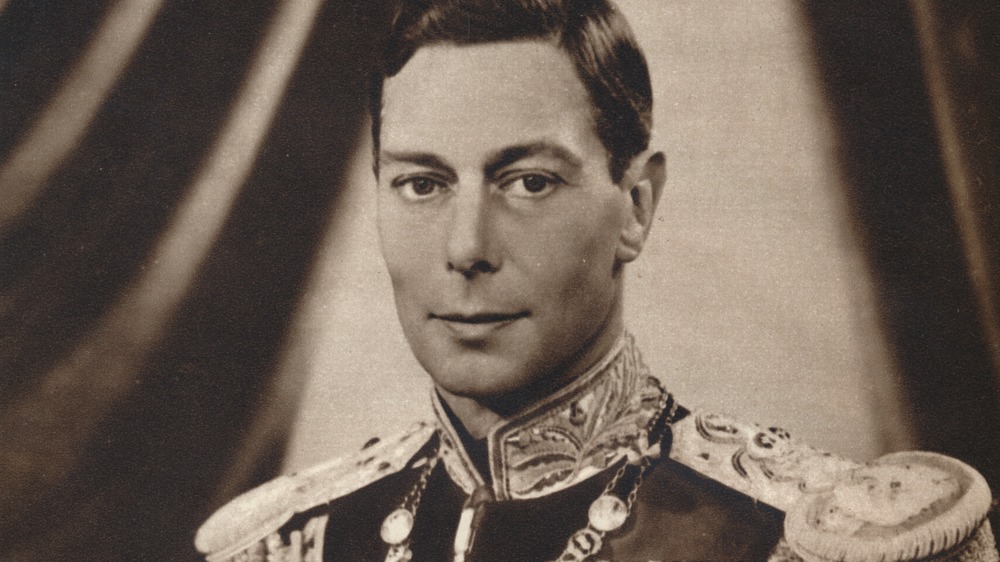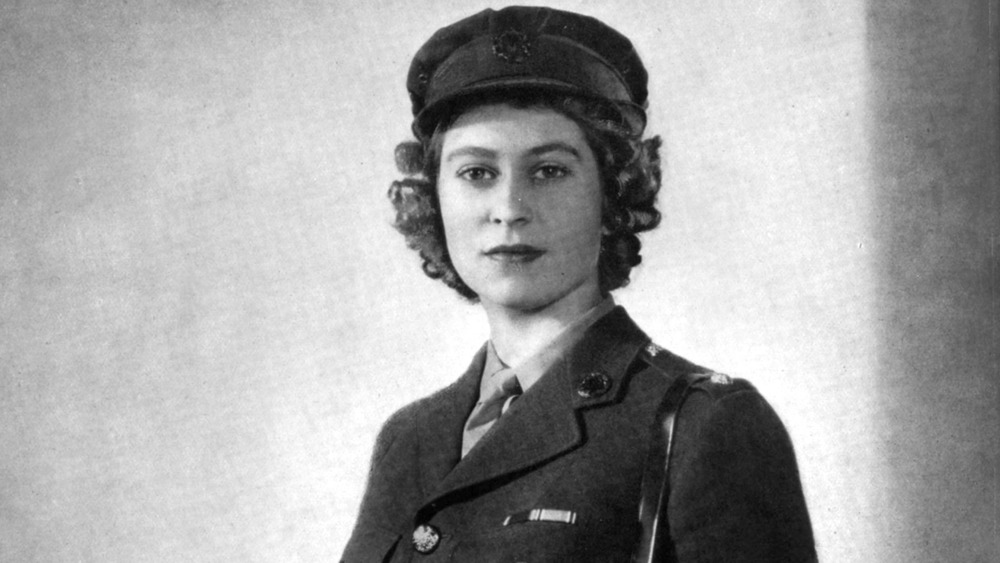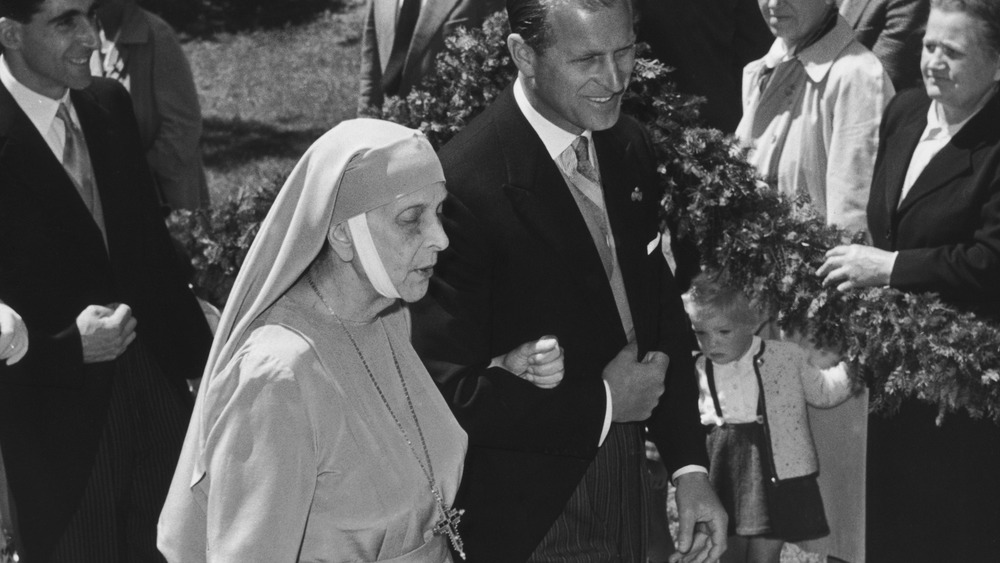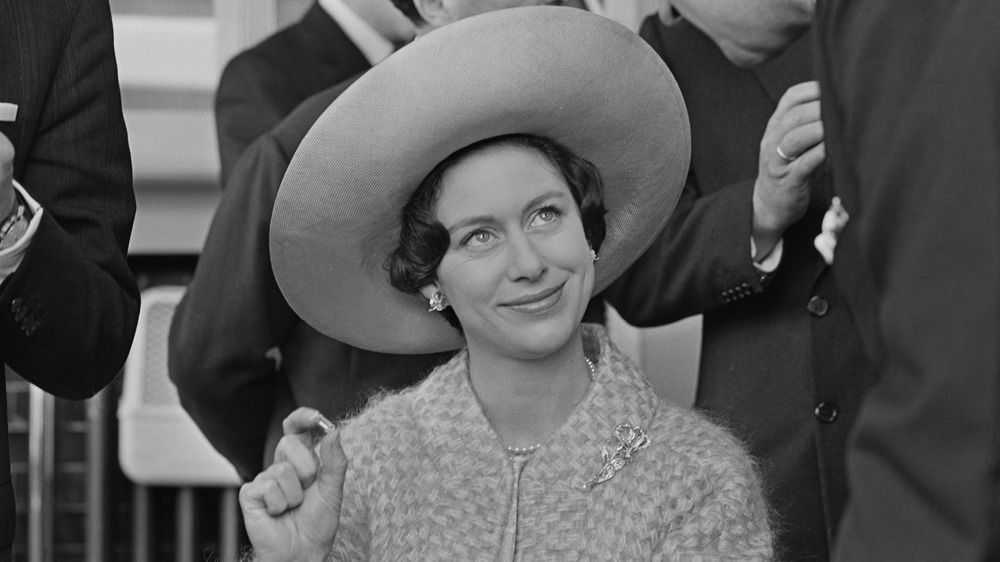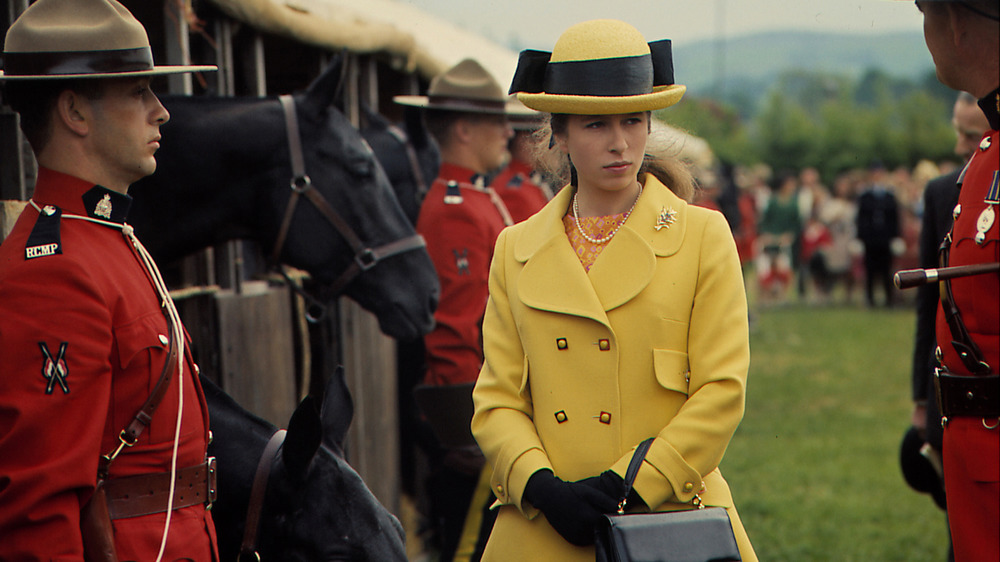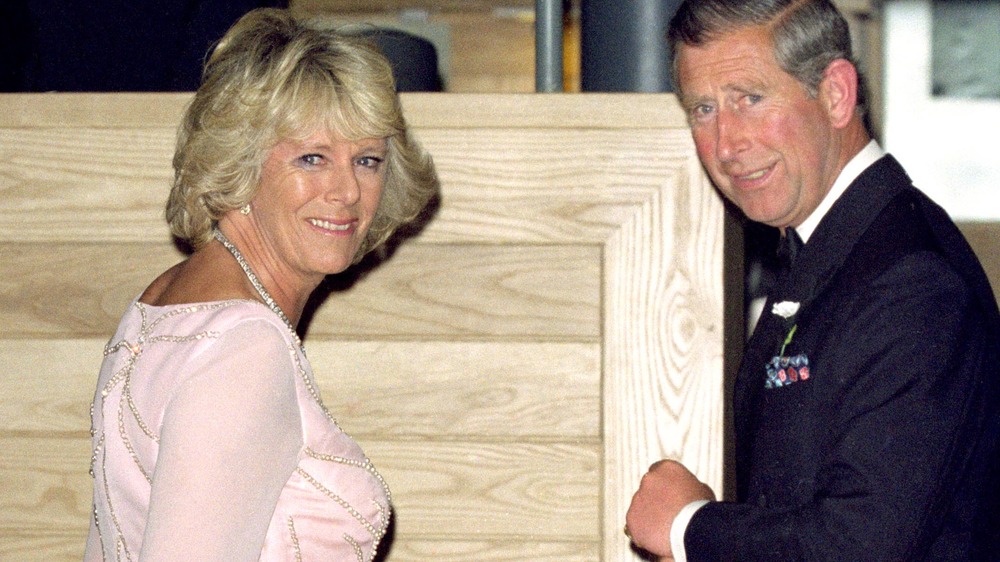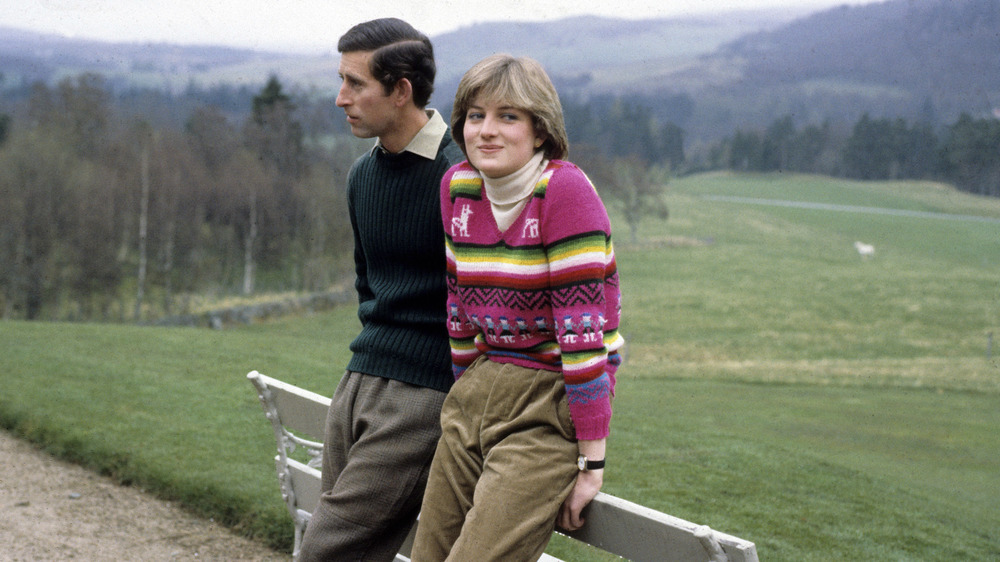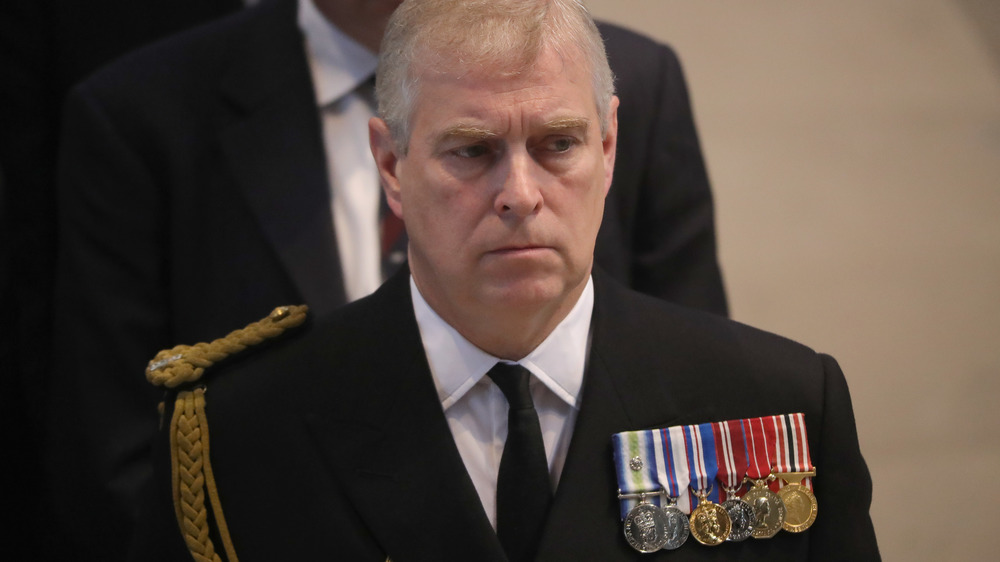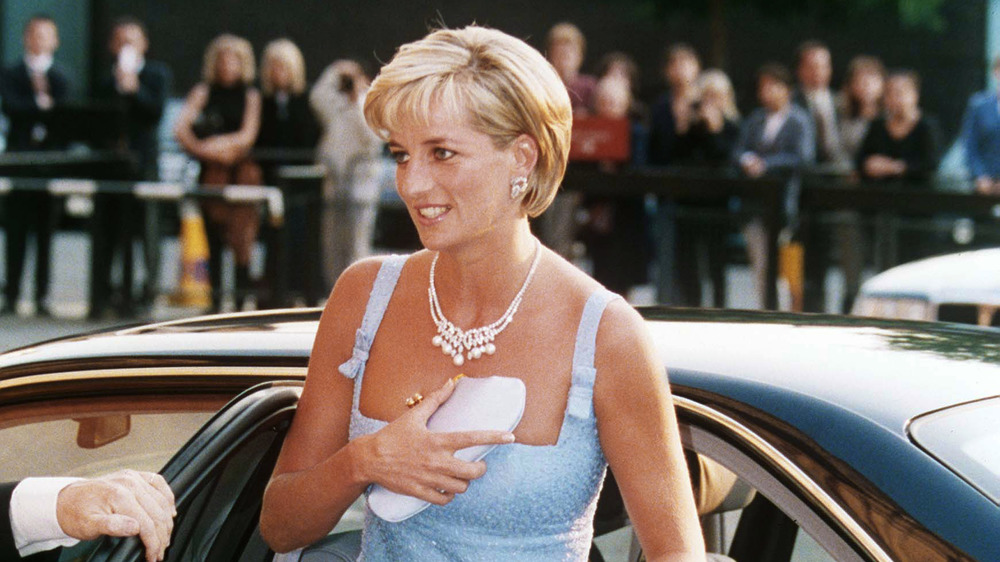Tragic Details About The House Of Windsor
Have you binge-watched The Crown yet? If not, read on and you will surely feel compelled to.
Since its official inception in 1917, the House of Windsor has been wrought with tragedy and scandal. From forbidden love affairs, to sex scandals, to a struggle to stay legitimate in an ever-modernizing world, one woman has been steadfast through it all. Whatever you may think about the existence of a British monarchy in 2020, Queen Elizabeth II's ability to hold a rather dysfunctional bunch together, if only occasionally by a thread, while reigning through some of the 20th century's most challenging times, is rather impressive.
The Windsor's very name was born from scandal when King George V was pressured to change it due to anti-German sentiment during World War I. To put into perspective how long Elizabeth II has been around, and how much she has witnessed Britain (and the world) change, the 94-year-old has been alive since the first Windsor's reign. King George V was Elizabeth's grandfather and was a part of her childhood. The Windsor queen has indeed, quite literally, seen it all.
What exactly has she seen? Let's spill the tea a bit before you head to Netflix.
King George V and the Romanovs
George V was the spitting image of his cousin, Czar Nicholas II (otherwise known as the last Russian Czar). They could have been twins. But could George have saved Nicholas and his family from their tragic fate?
He was born Prince George Frederick Albert in 1865 and was baptized at Windsor Castle. As the family's second son, he never expected to become king. But when his brother Prince Albert died in the Navy, George became the heir apparent and was crowned king in 1910. George's first cousins, Czar Nicholas and his wife, Alexandra, had grown distant, but in the last few years of their lives, George expressed concern for them in private letters. While Nicholas was well-loved by the British royal family, his German wife Alexandra was not so admired.
Growing anti-German sentiment was boiling beneath the surface during and after World War I. So much in fact that George decided to change his family name from "Saxe-Coburg-Gotha" to a much more British-friendly "Windsor."
The Russian government became a threat to the Romanov family, and whispers of revolution were in the air. The Romanovs requested asylum from the British. Unfortunately, it was by George's hand that the offer fell through. He felt it would be too risky to harbor his cousins for fear of growing anti-monarchical sentiment. The Romanov family was tragically assassinated in a basement in 1918 by the Bolsheviks. George failed to grapple with their brutal assassination the rest of his life.
Prince John -- the hidden royal
Prince John was the youngest son of King George V and Queen Mary. He was diagnosed with epilepsy by age 4 and was confined to a wheelchair for most of his life. Poor John was mostly kept a secret from the public, as the family did not want to portray the royal family with any weaknesses. Epilepsy was not well understood at the time.
John's uncle, the duke of Albany, also suffered from epilepsy but learned to live with it into adulthood. The Windsors hoped this meant that John would as well. John also suffered autism, and his behavioral challenges would tragically remain undiagnosed his entire life.
John spent the last years of his life at Wood Farm on the Sandringham Estate, which is now used as a retreat by Prince Phillip, the duke of Edinburgh. He passed away after a set of severe seizures in 1919 at the tender age of 13. John was largely left out of the conversation until 1998, when an independent London newspaper reported on the discovery of a photo album found in an attic in Paris that had belonged to Edward, the duke of Windsor. Some refer to him as "The Lost Prince."
Edward VIII's tragic love story (and abdication)
Prince Edward VIII, George V and Queen Mary's eldest son, wasn't a fan of being the heir to the throne, but he went through the motions while also managing to keep a full social schedule. Edward was thought to be quite the party boy. Once he inherited the throne, however, he was miserable.
In 1931, Edward met American divorcee, Wallis Simpson, who would change the course of the Windsor dynasty forever. It simply wasn't an option for the two of them to wed. Wallis was clearly not up to snuff in the royal family's eyes for a plethora of reasons. Wallis was uncomfortable that Edward was willing to give up his position for her. She entreated upon him to let her go. "For him to go on ... fighting the inevitable could only mean tragedy for him and catastrophe for me," Wallis said (via Town and Country).
But Edward was determined to be with her. Wallis finally divorced her then-husband, and "the inevitable" quickly materialized. In 1936, having only reigned for 325 days, King Edward VIII abdicated his throne in a radio address and declared allegiance to his brother, Albert, who would soon become King George VI.
"You must believe me when I tell you that I have found it impossible to carry the heavy burden of responsibility and to discharge my duties as king as I would wish to do without the help and support of the woman I love," Edward stated in his radio address.
George VI's heavy burden
When his older brother abdicated mostly unexpectedly, it was up to Albert, aka Bertie, to take the reins. But he had a speech impediment and was dreadfully shy, which would make his role as king all the more difficult. Like his father, as the second son, Albert was never meant to be the heir to the throne. But fate had other plans. Albert became George VI to carry on his family's tradition. He did his duty as a "believer in the principle of the monarchy," according to historian Jane Ridley. As to not disappoint the royal family, the shy Bertie largely overcame his stutter with discipline and determination.
George's wife, Lady Elizabeth Bowes-Lyon, who would later be referred to as The Queen Mother, was a tremendous support system. She was warm and personable and took on her role with talent and grace. "She became the strength behind the throne, helping transform [George VI] from a stammering, insecure second son into a loved and respected monarch," her New York Times obituary read.
George and Elizabeth not only had to win over the public after his popular and charming brother abdicated, but they also had to do their part in helping Britain through World War II. King George VI had a positive relationship with then Prime Minister Winston Churchill, and together they proved to be steadfast, sturdy leaders the country needed during The Blitz. Despite the danger, George refused to leave London throughout the war.
Queen Elizabeth II inherits her father's burden
Elizabeth was in her mid-20s when her father, George VI, died after suffering a long illness, leaving her to rule the monarchy. She would have to give up the joys of youth and would be married to the crown for the rest of her days. Despite having to give up the pleasantries of life, Elizabeth proved herself to be her father's daughter as the sturdy, diplomatic hand the crown required.
During World War II, Elizabeth proved what she was capable of when she joined the Auxiliary Territorial Service (ATS), which was the women's branch of the British Army. She became a driver of army trucks and even learned simple auto mechanics.
Despite having the freedom to make her own choices, Elizabeth grew into her role admirably and understood the importance of good public relations. She allowed her coronation to be televised to the dismay of Winston Churchill and others, who felt it would "cheapen" the ceremony.
Her reign has not been without controversy, however. She was reportedly cold and unsympathetic to the unhappy marriage of her son, Prince Charles, and Lady Diana. Elizabeth was also criticized for failing to "capture the mood" of the country following the death of her larger-than-life icon daughter-in-law. Despite her reign's many challenging hurdles, Queen Elizabeth has proven to be a continuous steady hand and is still the royal family matriarch in 2020 at 94-years-old.
Prince Philip's mother Princess Alice
Queen Elizabeth II's husband, Prince Philip, came from both Greek and British royal lineage. While his mother, Princess Alice of Battenberg, was only a Windsor by marriage, the queen's mother-in-law had such an extraordinarily tragic life it bears mentioning.
Alice was Queen Victoria's great granddaughter. She was deaf from birth but learned to read lips and went on to learn multiple languages. She married Prince Andrew, the fourth son of the king of Greece, in 1903, at the age of 18. The couple had five children together and only one son, Philip. Unfortunately the family had to flee Greece in 1922 after the start of the second Greco-Turkish war (via Elle).
After their escape, Alice's life became devastating. She was diagnosed as schizophrenic and institutionalized. Sigmund Freud has been criticized for involuntary treatments he carried out on Alice. After her release, she "founded the monastic society of Martha and Mary, which aimed at training sisters to take care of poor children and the sick," according to her obituary, and became mother superior of the order.
In 2018, Alice's great-grandson, Prince William, visited her tomb in east Jerusalem. "I am glad Prince William is learning about this remarkable figure because she really exemplified the best qualities of a princess, which is to look after your people in difficult times," Hugo Vickers, royal historian, said at the time. "She had no money and nearly starved to death in World War II. She is the one who should be made a saint."
Princess Margaret's first scandal
Princess Margaret, Elizabeth II's younger sister, didn't have the burden of being the heir to the throne, allowing her to act on her free-spirited tendencies. She became quite an icon in her own right, especially within the pop culture scene. But her first attempt at marriage was wrought with scandal and heartbreak.
Margaret fell for Group Capt. Peter Townsend, a divorcee 16 years her senior. When the romance went public, and Margaret began flirting with marrying the World War II hero, the royal family intervened. Due to the Royal Marriages Act of 1772, the queen had to give her official blessing before Margaret could marry. Unfortunately for Margaret, there was too much stacked against the couple for it to be legitimized. As the head of The Church of England, Queen Elizabeth was instructed not to recognize divorce. Not only was Townsend a divorcé (the same problem Edward and Wallis had) but was considered a "commoner" in the royal family's eyes. He was sent abroad while Margaret was traveling, causing a longstanding riff between she and her sister.
After her first marital attempt, Margaret would continue to live a rather public scandalous life, frequently putting she and her sister at odds with one another.
Princess Anne and her bodyguard
The Windsors seem to follow a pattern of falling for those who they could never marry and for those who are sworn to protect him. Princess Anne, Elizabeth and Philip's daughter, was no exception. When Anne was a young woman, she actually had a brief relationship with Andrew Parker Bowles, who became the husband of Camilla, now duchess of Cornwall. The royals don't stray far from their exclusive pool.
Anne embarked upon an affair with her personal bodyguard, Sgt. Peter Cross, while married to Mark Phillips. Both Anne and Mark Phillips were talented equine athletes. Phillips had a successful equestrian career and was even part of the British Olympic team in 1972. Cross was a police officer employed by Scotland Yard when he was assigned to Anne's royal protection detail in 1979. It would be years later that rumors of their affair began to circulate. According to Cross, Anne would use the ironic pseudonym of "Mrs. Wallis" when they spoke on the phone.
Everything was fun and games until a report in The Sun made the scandal public. Cross had to disappear for a while afterward, but they apparently continued to see one another.
The affair with Cross wasn't her only case of infidelity. She later had a tryst with naval officer Cmdr. Timothy Laurence, and eventually she and Mark Philips called it quits in 1992. Anne married Laurence shortly after her divorce.
Prince Charles and Camilla Parker Bowles
It's no secret that the young Prince Charles fell madly in love with Camilla Parker Bowles. Unfortunately, Camilla did not win the approval of the royal family when it came to a match for the future king of England. Among other drawbacks, she was seen as too "experienced" by the queen, having already been in many relationships. Needless to say, Charles was forbidden to marry her. He was advised by his mentor, Lord Louis Mountbatten, to find a "virginal bride."
Camilla went on to marry Andrew Parker Bowles — a move the royal family thought would surely end their affections. Charles courted the very young Diana Spencer, and since she passed his family's test, the two got engaged. Unfortunately for all parties involved, Charles and Camilla's love never faded, and they would reignite their affair in the mid-80s and continue to see each other in secret for many years. They have been married since 2005.
Prince Charles and Lady Diana Spencer
In one of the most memorable weddings of the 20th century, 31-year-old Prince Charles married 19-year-old Diana Spencer in what seemed like a larger-than-life fairytale wedding televised around the world. Their union would prove to be anything but, and Diana would suffer from crippling depression, bulimia, and isolationism in their early years.
After their two sons, William and Harry, were born, they attempted to make the marriage work, but it seemed doomed from the start. Divorce was highly discouraged in their situation. Charles was the future king, after all, and as Princess Margaret knew very well, The Church of England disapproved of the action.
However, their union continued to experience enormous strain. Charles' lingering feelings for Camilla Parker Bowles didn't help, and they were both far apart in age and sentimentality. In truth, they were polar opposites. After a string of candid, televised interviews Diana gave in the early 90s, it was clear the marriage was over. "There were three of us in this marriage, so it was a bit crowded," Diana famously uttered in a BBC interview in 1995.
The royal couple officially uncoupled in 1996.
Prince Andrew's sex scandal
Prince Charles and Princess Anne's brother, Andrew, has become the face of ultimate scandal these past few years thanks to his previous friendship with Jeffrey Epstein.
Andrew gave an interview to the BBC about his ties to the convicted criminal in 2019, and it didn't go well for him. His response to allegations of sexual abuse were less than convincing. Andrew did confirm that he resided in one of Epstein's Manhattan mansions for three days in 2010. He shrugged off the detail, simply saying it had been a "convenient place to stay."
His name was redacted from a 418-page testimony Epstein's partner, Ghislaine Maxwell, gave, but journalists were able to put the puzzle pieces together. Though Andrew is not high in the line of succession, the toxic rumors tying him to Epstein have "cost him and the rest of the House of Windsor dearly" (via Foreign Policy).
Andrew's public image has been forever tarnished, and he has since suspended his public royal duties for the foreseeable future.
The death of Princess Diana
While the Windsor family has experienced no shortage of scandal and tragedy, the sudden death of the icon Princess Diana undoubtedly takes the cake.
Shortly after Charles and Diana officially divorced, Diana had finally gotten to a point in her life at 36 where she held some autonomy, was in an exciting new relationship, and had her whole life ahead of her.
The "People's Princess" was killed in a car accident in Paris in the midst of a paparazzi chase, along with her boyfriend, socialite Dodi Fayed, and their driver, Henri Paul. But was it really an accident? A slew of conspiracy theories have lingered through the years about a possible motive for murdering Diana due to the nature of her death and tensions between her and the royal family. Conspiracies included that Diana had been pregnant with Fayed's child, Diana had apparently voiced to her butler that she feared for her life from "the establishment," and that Diana's medical care post-crash had been sabotaged. None of the reportedly 175 theories have been proven, and the official story is that her driver had been drunk at the time of the accident.
But similar to high profile conspiracies like "who killed JFK?" to "did they fake the moon landing?" to "Tupac is still alive and hiding in Cuba," Diana's death will continue to be deliberated.
